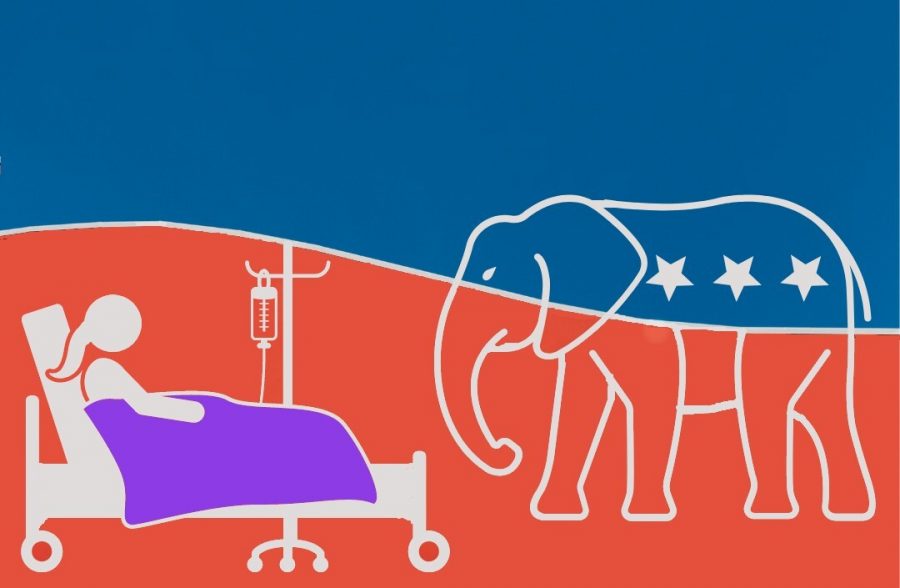Opinion | We need to get ready to say goodbye to Roe v. Wade
September 7, 2021
Here it is — the abortion piece. You had to know it was coming, right? There’s so much I could write about. I could write about how the “pro-life” argument falls flat coming from people who won’t even wear a mask or get a shot to protect their communities.
I could write about how I expect to see universal health care, environmental conservation, workers’ rights and affordable college policies introduced by legislators who are forcing patients to give birth.
I could write about how the fight to protect innocent lives seems to stop if the child is on the other side of the border. I could write about how most vasectomies are reversible — but it would probably be a short column.
Instead, I’ll write about how we got to the new Texas law, and what this means for us as well as the future of the Supreme Court.
First, I want to clarify how dire the situation truly is. The law — which went into effect on last Wednesday — bans almost all abortions after six weeks, with no exceptions for rape or incest and very narrow ones for the patient’s health.
For those who menstruate, that’s only one to two weeks after a missed period. Many are unlikely to know if they are pregnant in that amount of time, nevermind make a doctor’s appointment. It positions itself as a “heartbeat bill,” but it’s misleading because embryos haven’t yet developed hearts at six weeks. Instead, what a machine hears is electrical activity.
Laws like these put an overwhelming burden on patients of color, those from low-income communities and undocumented immigrants who already face disparities in accessing affordable reproductive health care.
And if someone finds out too late and still attempts to terminate their pregnancy, the law deputizes private citizens to sue anyone who performs or “aids and abets” an illegal procedure. These plaintiffs don’t need to have any connection to the patient or clinic, and they have a $10,000 incentive.
So, let’s talk about the elephant in the clinic room — how did Republicans get this passed? What about Roe v. Wade? The landmark 1973 Supreme Court case concluded that a person’s decision to have an abortion was deeply personal and protected by a fundamental right to privacy — more specifically, the due process clause of the 14th Amendment.
But Roe also acknowledged the government’s interest in potential human life — an interest that became compelling after the first trimester. This meant that during the first 13 weeks of a pregnancy, which makes up the first trimester, the state could not regulate abortion whatsoever. Regulations could begin during the second trimester, but they had to be reasonably related to the patient’s health. After viability of the fetus, at the third trimester, the state could ban abortion.
After that, however, was Planned Parenthood v. Casey. This 1992 Supreme Court case effectively weakened the power of Roe by introducing a new standard known as the “undue burden test.” This meant that restrictions on abortion could be imposed at any time during pregnancy, as long as they didn’t place a “substantial obstacle” to seeking an abortion.
Well, this new law is a pretty substantial f— obstacle. So, why didn’t the Supreme Court deem it unconstitutional? To get to that answer, we’re going to have to discuss a few things, including a new vocabulary term called a “shadow docket.” A shadow docket decision is an emergency court ruling left unsigned and issued without full briefs or hearing oral arguments.
This is the third order in two weeks that the Supreme Court issued in the dead of night. First, the Court determined that asylum seekers must remain in Mexico while they awaited hearings, then they overturned the eviction ban. And, most recently, they refused to block the new Texas law.
In a 5 to 4 decision, the Court said abortion providers who challenged the law had not made their case in the face of “complex and novel” procedural questions. This decision was not based on the constitutionality of the ban, but rather the persuasiveness of the providers’ emergency application.
But the longer this law stands, the clearer it is to other state legislatures that they can pass similar bans. Currently, there is legislation introduced in 19 states that would ban abortion after 12 weeks. The Supreme Court’s continued use of this backdoor process feels foreboding. Will we wake up one morning to find that Roe v. Wade was overturned while we slept? A Mississippi case to reverse Roe is already before the Supreme Court.
We are so far from the unanimous Senate confirmations and bipartisanship that used to form our Supreme Court. We are facing a Supreme Court that utilizes an emergency process to absolve it from providing transparency or justification for its decisions. A Supreme Court that contains a justice who was sworn in days before our country elected a new president. Our country is only becoming more polarized.
We need a response. I’m not talking about a “Can you chip in $10?” email, I’m talking about a full-scale attack plan. It is almost impossible to out-organize efforts to reverse Roe, especially since white women have a pattern of voting against their own interests.
This means progressives lobbying to get Roe v. Wade codified into federal law. This means fighting tooth and nail for every state legislature seat. This means leaving behind moderate Democrats who are not staunchly pro-choice. This means working to end the filibuster and protect voting rights.
It’s time to begin one of the biggest fights for reproductive rights of the 21st century.
India writes primarily about politics for The Pitt News. Write to her at [email protected] or follow her on Twitter @indialarson_.




